This article is in english as I want locals to understand. Désolé pour ceux qui ne comprennent pas l’anglais. And the ones who don’t know french will be happy !
After Östersund, I am not anymore in the mountains. I am now riding accross hills cover by forest of pines, firs and birches. Between these hills, there are numerous big lakes.
All these landscapes have been formed by glaciers during the last ice-age. More of the lakes are long and narrow in a valley and retain by the front moraine of the old glaciers. The moraine hills, formed of sand and gravels, prevent the river to flow, and a side pass have been found by the water, creating waterfall on the rocks.
This was the case on the Ragundasjön, which ended by strong rapids. Here, forestry have been a main activity from centuries. And people used the water stream to carry the wood downstream. The waterfall was then a main problem as it breakes the trunks. The, people were trying to create side pass for the wood, in order to prevent the trunks to break in the rapids.
Let’s read some more explanation on this picture…
This is not a picture….
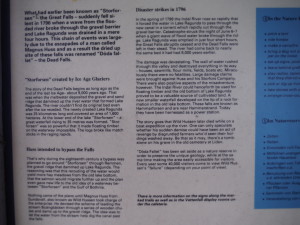
The ingeneer Vildhussen, has the smart idea of using the stream of a small creek to erodate the moraine.
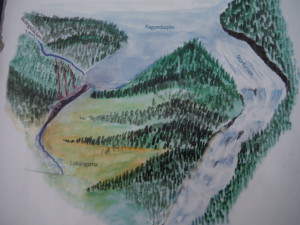
But during the floods season of 1796, the water began to take the side pass created for the wood, eroding more deeply the moraine. And the lake was emptied in 4 hours… flooding all the land downstream.
Now the waterfall do not exist anymore, and the rocks the water was falling on are called the dead waterfall.
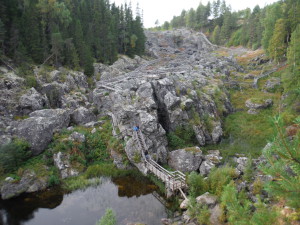
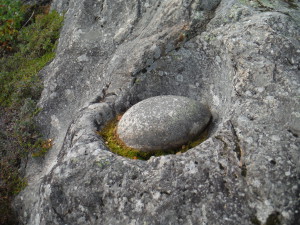
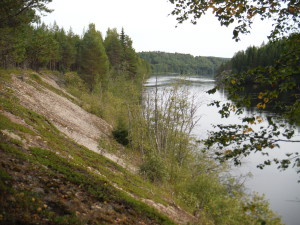
This is an old story but… There is an other lake upstream, the Indalsälven, with a similar geology.
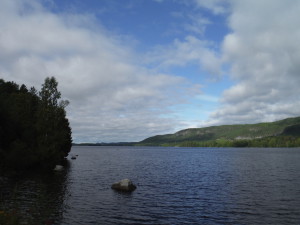
The Indalsälven is retained downstream by a moraine. This moraine is formed by a serie of small hills and several small lakes in the between. These hills are not high up of the lake level, only some meters, and are formed by sand and gravels. These could be eroded easily…
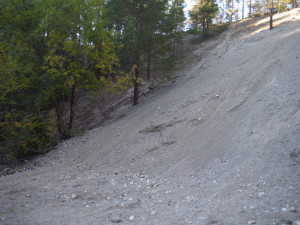
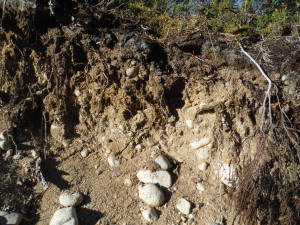
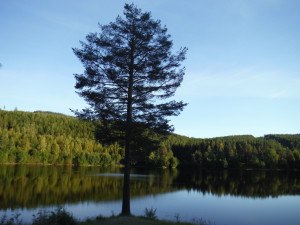
But today, we don’t use anymore the water stream to carry the troncs, we use trucks. We do not employ anymore a lot of people to cut the trees, we use heavy machines. And theses heavy machines erodes soils…
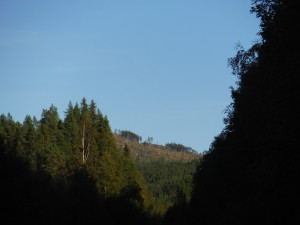
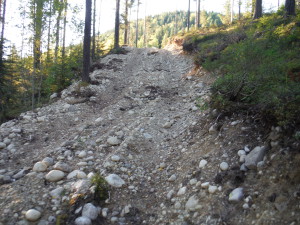
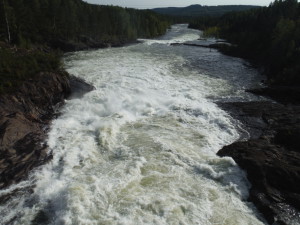

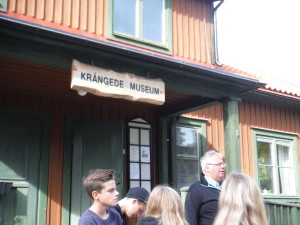
Today the environment agency on the swedish gouvernment assess there is a risk that the story of the dead waterfall heppens again, with Indalsälven, because of the forestery erosion… The newspaper telles about the risk of erosion of the Indalsälven moraines, and the restrictions taken by the gouvernment to prevent it. (you can use google translate to get it in bad english or ugly french). onsite, we do not see so much, just what I tells, the hills are not high and are subject to easy erosion… Some geophysical studies may be needed in order to know how deep is the bedrock and better assess the risk.
There are basically nobody in these hills to ask about their perception of the risk. My guide in the museum does not looks to feel the risk is so huge.
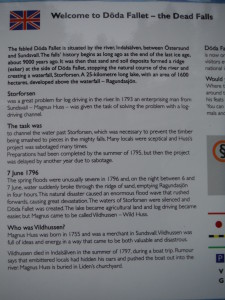
Hi Valentin,
Sorry for the delayed message. It was so nice to host you and great to hear that you made it to the dead waterfall and the Thai pavillion.
Also a big thank you for the long post in English. The dead waterfall is interesting but we all hope that one dead waterfall is enough. We don´t want to get a second one.
Enjoy your trip
/Joakim